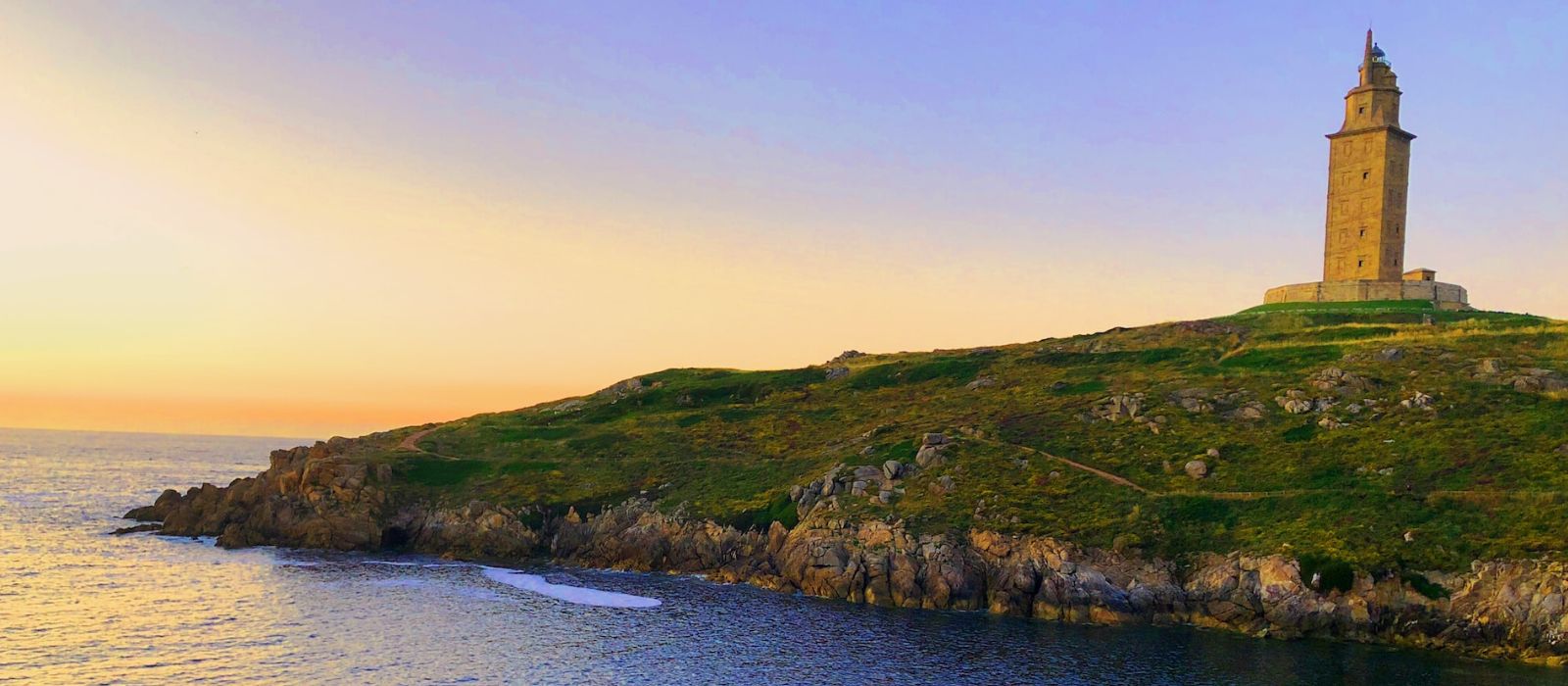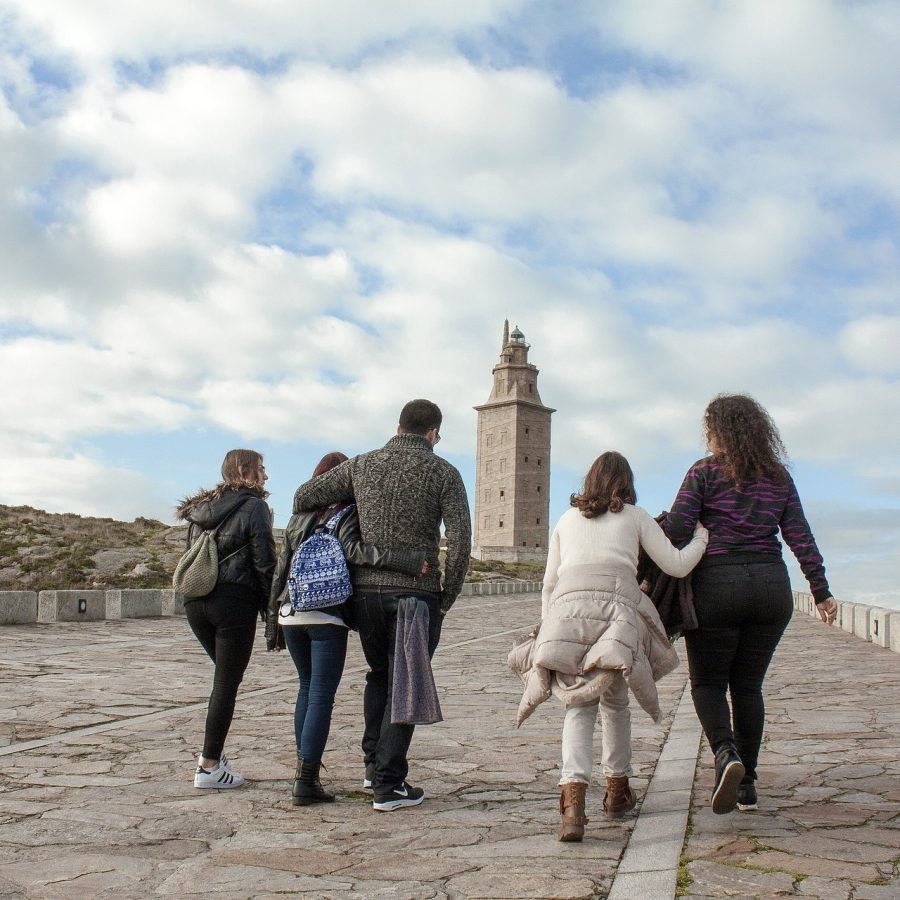The Tower of Hercules: everything you need to know

Hercules Lighthouse: everything you need to know
The Tower of Hercules, also referred to as Hercules’ Lighthouse, is located in the Galician city of La Coruña, in Spain. Fifty-five metres high, it is famous because it is the world’s only working Roman lighthouse (as well as being the oldest). For this reason, it has been included on UNESCO’s World Heritage list.
Today it is considered as one of the country’s most popular tourist sites, due to its outstanding historical value and interest.
The History of the Tower of Hercules
To date, there is no documented evidence of the origins of Hercules’ Lighthouse. However, it is known that it was rebuilt by the Romans between the 1st and 2nd centuries CE to guide the ships that sailed the western seaboard of their empire. Until the 20th century, it was known as Farum Brigantium and its construction is attributed to the Portuguese architect Gaius Sevius Lupus.
The first mention of Hercules’ Lighthouse dates back to the year 415 CE, when the writings of the day referred to “a tall lighthouse that stood in the city of Galicia, Brigantium”. It is also mentioned as “part of the route to Britannia”.
The lighthouse fell into disuse in the Middle Ages, but it was later used as a defensive element. The first renovation of the tower dates back to the 17th century, when a wooden staircase was built to reach the top. However, it was not until the reign of Charles III that it was completely rebuilt, following the designs of the Spanish engineer Eustaquio Giannini.
An interesting fact about the history of the Tower of Hercules is that it is twinned with the Statue of Liberty in New York, USA and with El Morro Lighthouse in Havana, Cuba, the oldest on the American continent.
And, if you’re wondering how many steps the Tower of Hercules has, the answer is around 230, the equivalent of 2,215 footsteps. In other words, a climb to the top will burn off around 300 calories.
Today, the site where the lighthouse stands is a museum where visitors can admire the works of several major artists, set against a natural backdrop.

The Tower of Hercules and its Legends
The Tower of Hercules is shrouded in legend. One tale claims that the mythical hero Hercules who arrived here by ship and buried the head of a giant he had defeated in battle. Other historians believe that this may have been the site of the legendary Breogan Tower, associated with Irish mythology.
Tickets for the Tower of Hercules
Admission tickets for the Tower of Hercules can be purchased at the Visitor and Information Centre or online at the lighthouse’s official website. The general admission fee is 3 euros and the reduced rate is €1.50.
Admission is free on Mondays, but you must obtain a ticket from the sales office. Opening times are shorter in autumn and winter, from 9.45 to 17.00, but from June to September the tower is open from 10.00 to 21.00.
It takes around 40 minutes to visit the tower, but if you require a guided tour, you should allow an hour. These tours are available at 12 noon and 16.00, although in summer there is an additional tour at 20.00. Numbers are limited.
If you’re travelling from outside La Coruña, we recommend you choose a hotel that is within easy reach of the tower. The Hotel Attica21 Coruña is just 12 minutes’ drive from the tower. By bus, the journey takes around 45 minutes. What’s more, if you’re a sports fan and are fit enough to cycle up a steep slope, it will take you just 30 minutes by bike from the hotel.
Likewise, if you’re planning to visit the tower over the Christmas season, remember that both the offices and the lighthouse are closed on 24th, 25th and 31st December, as well as the afternoon of 1st and 5th January and all day on 6th January.
Other sites of interest close to the Tower of Hercules
There are several other sites of interest to visitors within easy reach of the Hercules’ Lighthouse:
- Orzán Beach.
- Riazor Beach.
- Emilia Pardo Bazán House Museum.
- Termaria Casa del Agua Spa and Fitness Centre.
- Santa Margarita Park.
- Science Museum.
- San Antón Castle.
- San Pedro and Bens Park.
- Europa Park.
- Visma village.
